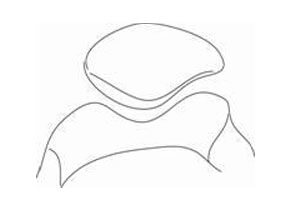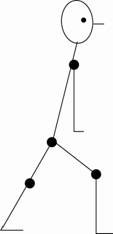STARR Study Group, Meuffels, D. E., &...
New publication
STARR Study Group, Meuffels, D. E., &...
New publication
Arens T, Melick van N, van der Steen MC, Janssen...
Editor’s Pick Prof Stafano Zaffagnini Journal of Experimental Orthopaedics
Anterior knee pain
Anterior knee pain is defined by symptoms of discomfort in and around the kneecap (patella). It may occur at any age but seems most dominant in adolescents. Anterior knee pain occurs more often in women than men. It is also known as patellofemoral pain.

The knee joint is the articulation between the upperleg (femur) and lower leg (tibia). The patella is the bone in front of the knee, The muscles in the front of the upperleg are called quadriceps muscles. They attach to the patella which in turn connects to the lower leg by the patellar tendon. The patella runs through a bony groove of the femur (trochlea) covered by cartilage when the knee flexes and extends. The patella also has a cartilage cover. The patella works as a lever due to the great forces placed on the muscles in knee flexion and extension.
Anterior knee pain occurs most frequently in deep flexion moments of the knee such as stair climbing, squatting and sittiing with bent knees for longer period of time. 
The causes are not fully understood. Slight maltracking of the patella through the trochlea frequently occurs with quadriceps disbalance, after knee injuries. Other causes are overweight, osteoarthritis, leg malalignement, trauma to the knee, posterior cruciate ligament injury or sports overuse. In adolescents, this is often related to periods of physical growth. This maltracking leads to pain of the patella and surrounding tissues. Patella partita (loose bone parts) of the patella is a rare cause for anterior knee pain. An X-ray can detect this patella anomaly. Sometimes, the specific cause for the anterior knee pain is not found.
The following treatment can reduce the symptoms of anterior knee pain: 1) relative periods of rest and analgesic medication and/or 2) exercises. Often both treatments are combined. It is important to understand that the pain may be annoying but innocent. There is no damage to the knee in the long run. You are allowed to move your knee even if complaints occur.
1. Relative rest periods and analgesic medication
The activities that provoke the complaints (stairclimbing, squat, kneeling) should be prevented as much as possible. Icing of the knee, non steroidal anti-inflammatory drugs (NSAID) and paracetamol may significantly reduce symptoms.
2. Exercises to improve quadriceps balance
The quadriceps muscles, especially the innerside upper leg muscle, is essential for adequate patella tracking through the trochlea. It is important to train this specific muscle (Vastus medial muscle). The following muscle strengthening exercise should be performed for at least 4 months to achieve adequate results. Place a small pillow below your knee and extend the leg. Keep the leg in the air for 10 seconds and then let it rest for 5 seconds. This is one cycle of exercise. You can feel the inner quadriceps tighten, without loading the painful patella. Repeat the exercises twice a day, in 3 series of 15 cycles. Be careful! Fitness machine exercises such as leg press, leg raise and rowing machines are unwise. The anterior knee pain will often increase and may persist.

Treatment in case of less pain symptoms
If the pain is less severe, you may start the next exercises. No weights or fitness machines, this overloads the patella.
1. Muscle strengthening exercises – squat
You may also perform this exercise on a slight ramp. Repeat the exercises twice a day, in 3 series of 15. If squatting on two legs goes well, you may proceed with the more strenuous exercise (squat on one leg).
-
Squatting on both legs
Stand up straight with your feet next to each other. Bend through your knees while working your quadriceps actively.
-
Squatting on one leg
Stand on one leg, bend through your knee and tension your quadriceps actively.
2. Muscle stretching
In addition to the muscle strengthening exercises, it is also important to maintain adequate muscle length. If the muscles are too short, there is excessive pull on the patella with pain. The following stretching exercises are recommended 3 times daily. Keep up the stretching for 20-30 seconds and repeat the exercise 3 times.
-
Quadriceps stretching
Stand on on leg en place the heel of the other foot to your buttocks. You will sense tension on the front muscles of your upper leg.

-
Hamstring stretching
Sit on a flat surface en bring your hands toward your ankles. You will feel tension on the muscles in the back of your upper leg.

-
Stretching of calf muscles
Make one step forward with one leg. The other leg should be straightened with the heel remaining on the floor. You will feel tension in the calf muscles.
 –
–





